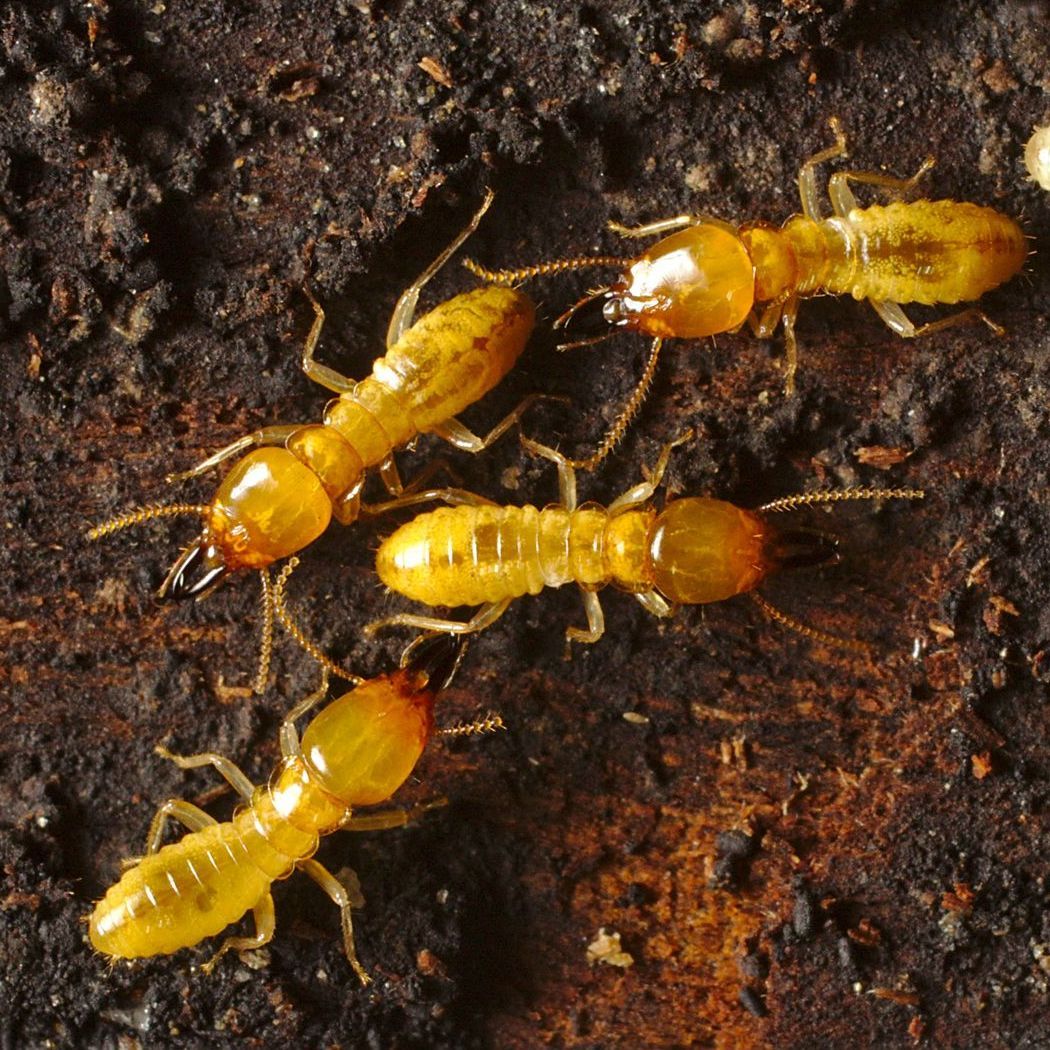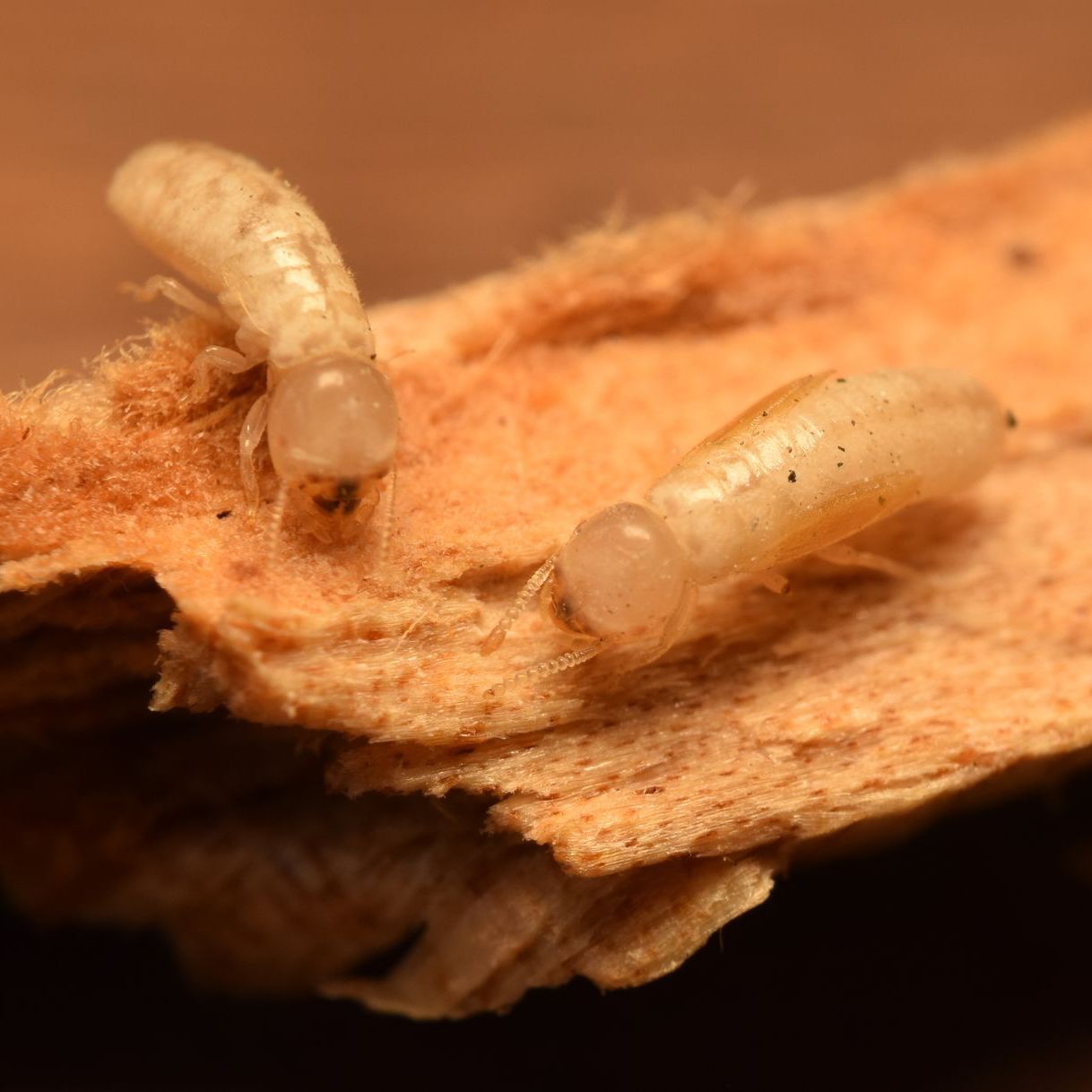Termites In North Texas

Subterranean Termite
- Species:
- Subterranean termites belong to the family Rhinotermitidae.
- Common species include the Eastern subterranean termite (Reticulitermes flavipes), Western subterranean termite (Reticulitermes hesperus), and Formosan subterranean termite (Coptotermes formosanus).
- Habitat:
- These termites live in underground colonies, often located in soil, wood, or other cellulose-rich materials.
- They construct mud tubes or shelter tubes to connect their colonies to food sources, providing protection from predators and maintaining a humid environment.
- Diet:
- Subterranean termites feed on wood, paper, cardboard, and other cellulose materials.
- Their feeding can cause significant damage to structures, including homes, wooden furniture, and other wooden components.
- Colonies:
- Subterranean termite colonies consist of three primary castes: workers, soldiers, and reproductives (alates or swarmers).
- Workers are responsible for foraging, feeding, and building tunnels.
- Soldiers defend the colony against predators, mainly ants.
- Alates are winged termites that leave the colony to mate and establish new colonies.
- Reproduction:
- Termite colonies produce alates during specific times of the year, and these winged reproductives engage in swarming behavior.
- After mating, alates shed their wings and form new colonies.
- Mud Tunnels:
- Subterranean termites construct mud tubes, also known as shelter tubes, to protect themselves while foraging for food above ground.
- These tubes may be found along foundation walls, in crawl spaces, or other areas with wood-to-soil contact.
- Damage:
- Subterranean termites cause extensive damage to structures by consuming wood and weakening the integrity of wooden components.
- Damage often goes unnoticed until it becomes severe, as termites feed from the inside out.

Drywood Termite
- Species:
- Drywood termites belong to the family Kalotermitidae.
- Common species include the Western drywood termite (Incisitermes minor) and the Southeastern drywood termite (Incisitermes snyderi).
- Habitat:
- Drywood termites infest dry, sound wood, including structural timber, furniture, and other wooden items.
- They do not require contact with the soil, making them capable of infesting both above-ground and below-ground wooden structures.
- Colonies:
- Drywood termite colonies are smaller compared to subterranean termite colonies.
- The colony is typically located entirely within the wood they infest.
- Feeding and Damage:
- Drywood termites feed on the cellulose found in wood, extracting nutrients and causing structural damage.
- Their feeding creates galleries and tunnels within the wood, weakening its integrity over time.
- Swarming Behavior:
- Drywood termites produce alates, or winged reproductives, which leave the colony to mate and establish new colonies.
- Swarming behavior typically occurs during warm months.
- Frass:
- Drywood termites produce distinctive fecal pellets known as frass, which are pushed out of small kick-out holes near the infested wood.
- The presence of frass is a common sign of drywood termite infestation.
- Detection:
- Detection of drywood termites can be challenging because they infest hidden and hard-to-reach areas.
- Look for signs such as frass, kick-out holes, or the presence of wings around windowsills.